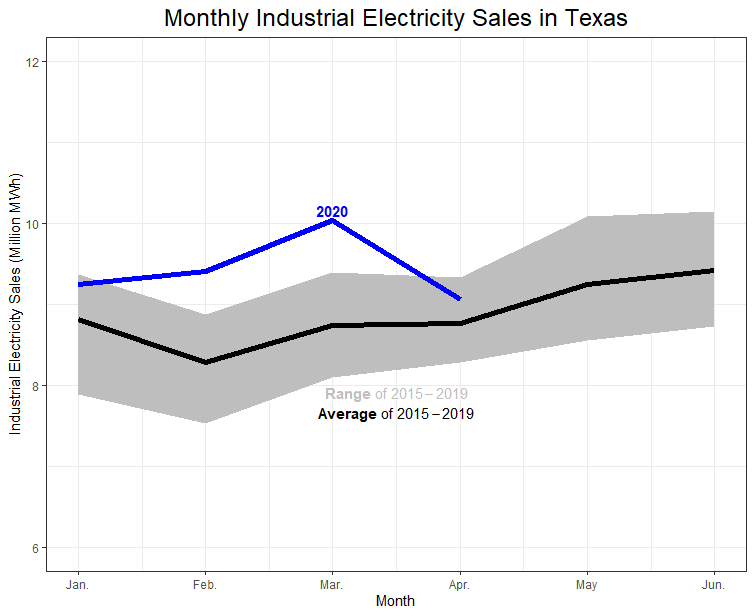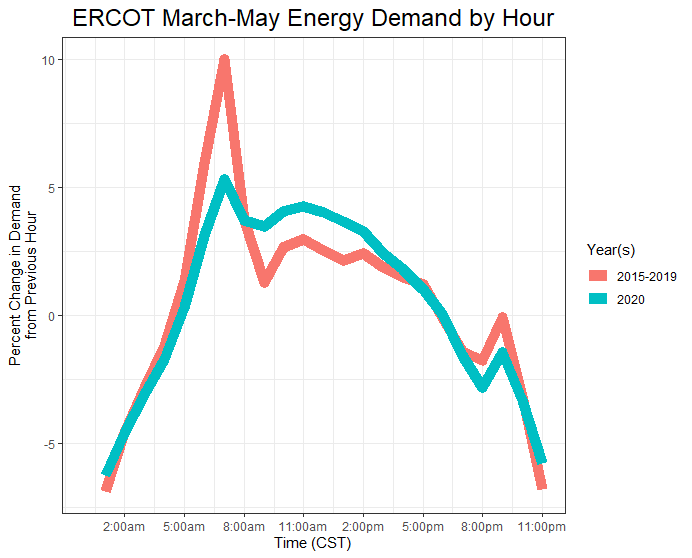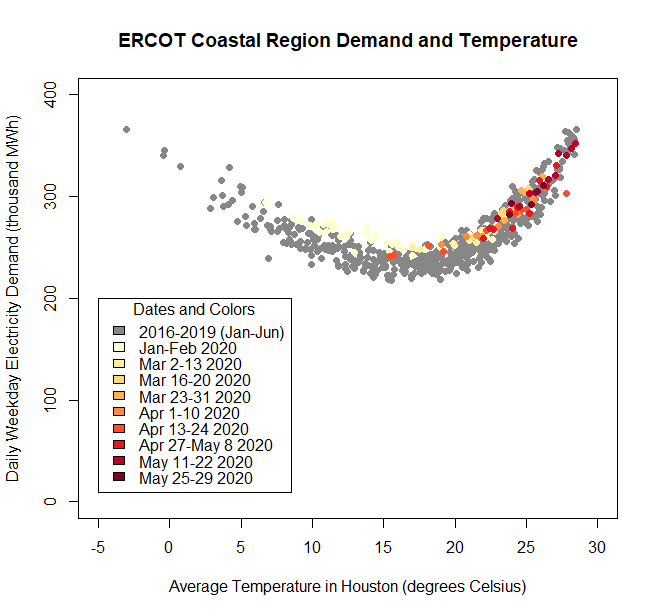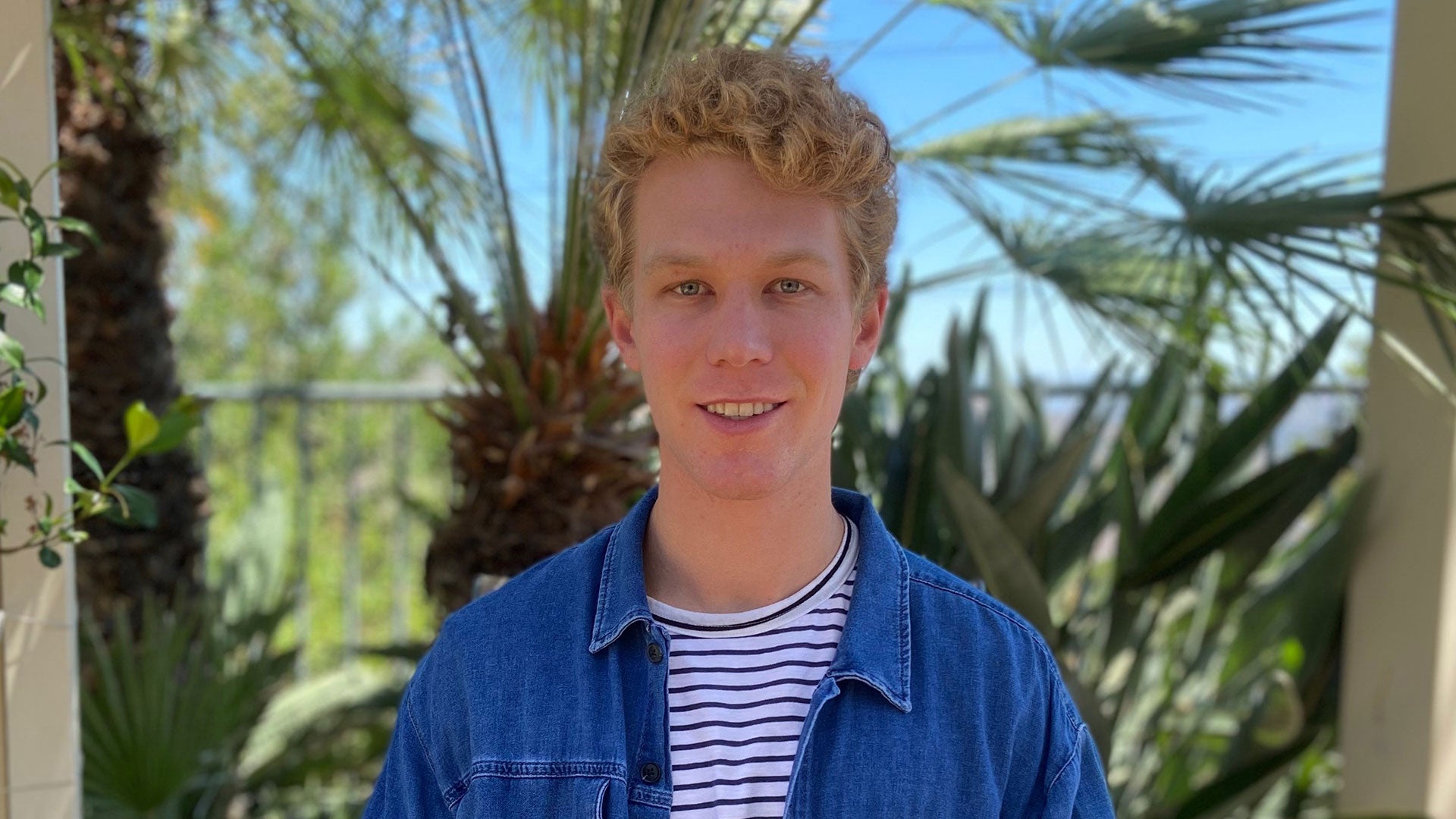Rewolinski’s original summer plan was to work as a full-time intern for a renewable energy company in Houston. Due to the COVID-19 pandemic, the internship was canceled and Rewolinski went back home looking for remote opportunities. Through the Rice Summer RECODE program, Rewolinski is researching the air-quality impacts of COVID-19 response policies with Daniel Cohan, associate professor of civil and environmental engineering, and Daniel Kowal, Dobelman Chair Assistant Professor of Statistics.
Many states have implemented such COVID-19 response policies as sheltering in place, self-quarantining and closing businesses. Kowal and Cohan’s project focuses on how those policies have affected human travel, energy use and air quality. One of Rewolinski’s roles in the project is to look at forms of combustion and how electricity demand and power plant emissions are changing. “So far what I’ve found is that the residential electricity usage in the United States increased a little bit in April 2020 compared to past years because people are spending more time at home. If you look at the industrial and commercial sectors, the electricity levels have had a pretty steep decline in most areas.”


The Electric Reliability Council of Texas (ERCOT) is the balancing authority, the provider of power that supplies data for Texas. The “ERCOT March-May Demand by Hour” graph below shows the diurnal patterns of electricity usage in the state. It shows that hourly patterns of electricity use haven't been changed by the pandemic. The “ERCOT Coastal Region Demand and Temperature” graph shows the relationship between temperature and electricity demand in Texas. The state’s demand was not changed due to the pandemic.


The scope of the project is national. The project has been underway for about two months and is ongoing, with more updates and results expected.
“I’m not taking anything that I have during this time for granted. The pandemic has made me really appreciate the research opportunities and the flexibility of working on the project remotely.” Rewolinski said. He was able to apply the skills learned in class, such as STAT 410, taught by Kowal, his adviser. Programming is a big aspect of the project. “I think the best way to learn a programming language or a statistical programming language like R is to use it in a project, which gives you a different level of knowledge.”
This project not only provides a summer research opportunity for Rice students but also extends students' study for the fall. Zach Rewolinski and four other students, Winnie Louh, Yunseo Choi, James Li, and Anthony Nguyen, have written abstracts for the American Geophysical Union (AGU) Fall Meeting. Dr. Cohan said. “The students on this project have shown a lot of dedication, logging in anywhere from 7 am San Diego time to 11 pm in Korea for our weekly Zoom meetings. It’s been great to see their skills progress over the course of the summer.”
About the Rice Summer RECODE Program
The Rice D2K Lab, in partnership with the Ken Kennedy Institute and the Departments of Computer Science, Electrical and Computer Engineering, Statistics, and Computational and Applied Math, is announcing the Rice Summer RECODE (Research Experiences in COmputational and Data Engineering) program. RECODE is for computational Rice undergraduate and professional masters students whose summer plans have been affected by the COVID-19 pandemic. The program will help students seeking research positions and provide virtual engagement and enrichment opportunities throughout the summer.

